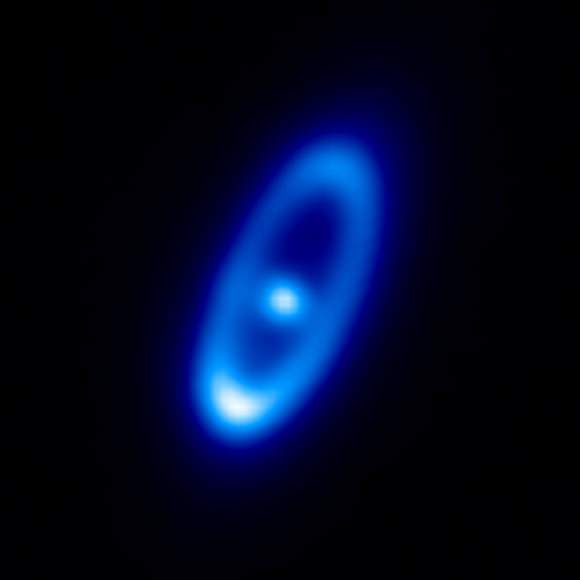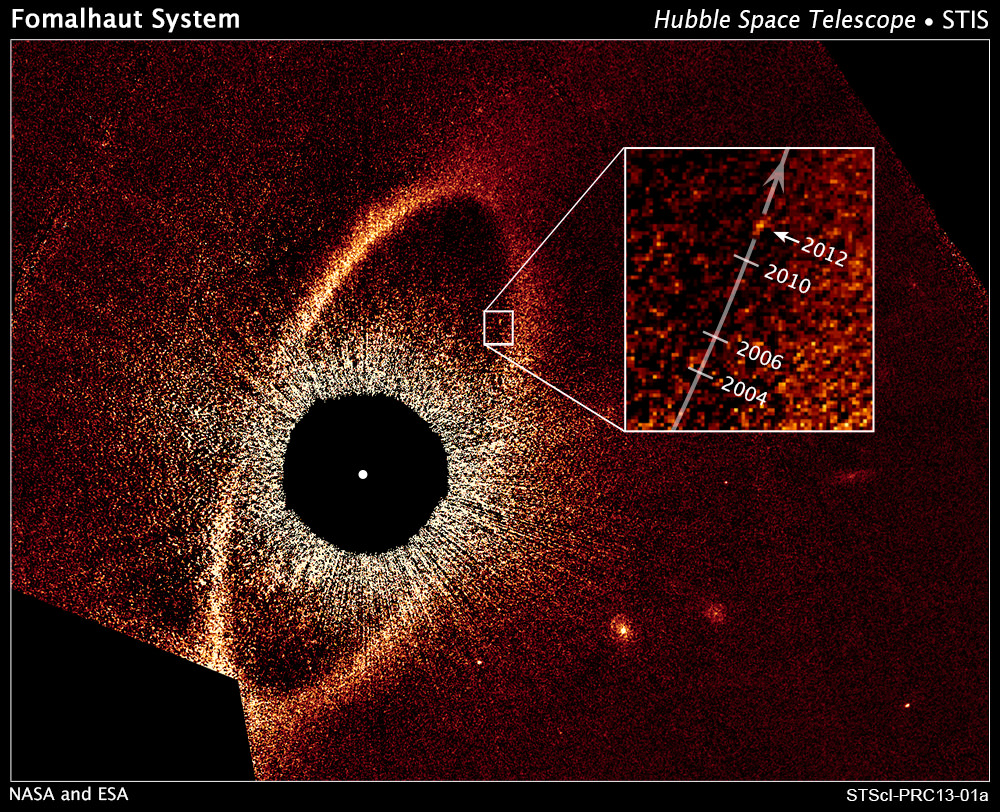Fomalhaut is a really cool place to study. The naked-eye star (the brightest star in the constellation Piscis Austrinus) has a planet, Fomalhaut b, that once appeared dead but rose again in science circles. It is the site of a comet massacre. Now it’s getting even more interesting: Scientists have believed for years that Fomalhaut is a double star, but a new paper proposes that it is actually a triplet.
“I noticed this third star a couple of years ago when I was plotting the motions of stars in the vicinity of Fomalhaut for another study,” stated Eric Mamajek, associate professor of physics and astronomy at the University of Rochester. The third star is known as LP876-10 or Fomalhaut C.
“However, I needed to collect more data and gather a team of co-authors with different observations to test whether the star’s properties are consistent with being a third member of the Fomalhaut system.”
That opportunity came when Mamajek was in Chile and by chance, talking with Georgia State University’s Todd Henry, who is the director of the Research Consortium on Nearby Stars. A student (who has now graduated), Jennifer Bartlett at the University of Virginia, was working on a study of potential nearby stars for her Ph.D. thesis, which included the star that Mamajek was curious about.

The team plotted the star’s movements and spectroscopy (to see its temperature and radial velocity) and concluded the speed and distance of the star matched that of the Fomalhaut system.
LP876-10/Fomalhaut C is a red dwarf that appears the distance of 11 full moons apart from Fomalhaut in the night sky. It seems counterintuitive to believe they are close together, but the team reminds us that Fomalhaut is very close to us as stars go: 25 light-years away.
“That they appear so far apart could explain why the connection between LP 876-10 and Fomalhaut had been previously missed,” the team stated.
The paper is available on the preprint website Arxiv and has been accepted for publication in the Astronomical Journal.
Source: University of Rochester

